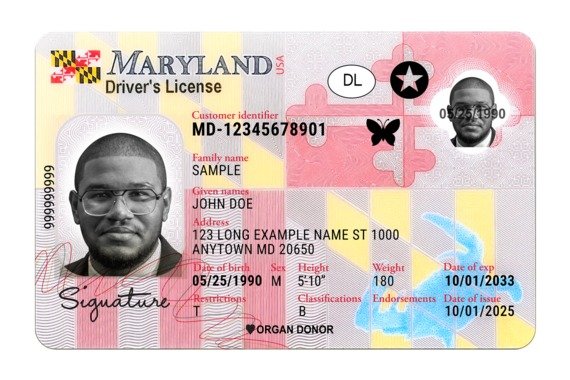MDOT Unveils The Butterfly Effect
Maryland Introduces A New Driver’s License / ID Card Design Featuring An Optional Hidden Disability symbol
The Maryland Department of Transportation (MDOT) and the Maryland Motor Vehicle Administration (MVA), alongside legislative leaders and advocates, announced today a groundbreaking update to the state’s driver’s license and ID card design: an optional Hidden Disability symbol.
The butterfly emblem, introduced under House Bill 707 and Senate Bill 618, allows Marylanders with hidden disabilities—including autism, intellectual and developmental disabilities, or other conditions that may not be immediately apparent—to voluntarily add the designation to their driver’s license, ID card, or moped permit. The symbol is free and aims to provide first responders and others with crucial information that can promote safety, understanding, and accommodations during interactions.
“Providing this hidden disability designation is an important step toward making Maryland roads and communities safer and more accessible for everyone,” said Maryland Transportation Acting Secretary Samantha J. Biddle. “Not every disability is visible, and this is an easy, free way to communicate with residents and first responders.”
The initiative is widely known as Eric’s ID Law, inspired by the experience of Eric Carpenter-Grantham, a Marylander living with high-functioning autism. His mother, Linda Carpenter-Grantham, advocated for the change after realizing how a lack of awareness about Eric’s disability created unnecessary stress during routine encounters.
“Eric’s ID Law is a victory for the disabilities community,” said Linda and Eric in a joint statement. “The butterfly represents hope, peace, freedom and change. It was created to help save lives for people with hidden disabilities such as autism, mental health challenges, and hearing impairment.”
The symbol, similar to existing organ donor or veteran designations, will appear on the front of state-issued IDs. Participation is entirely voluntary, and applicants do not need to provide supporting medical documentation. Residents may update their designation through their online myMVA account, self-service kiosks, or in-person at one of 24 MVA branches. While adding or removing the butterfly is free, standard fees apply for unrelated transactions, such as license renewals.
State Senator William C. Smith Jr. and Delegate Jheanelle K. Wilkins sponsored the legislation, which both described as a model of community-driven lawmaking. “It started as an idea from a constituent,” Smith said. “Eric and Linda have been incredible partners, and it’s rare to see a seed of an idea grow into something with such meaningful impact.”
Wilkins echoed the sentiment: “Eric’s ID Law has the power to save lives. This legislation reflects true collaboration between community and law enforcement.”
The law has drawn broad praise from state and local leaders. Lt. Governor Aruna K. Miller called it “a symbol of progress and compassion,” while MDOT MVA Administrator Chrissy Nizer described it as “a simple, yet powerful way to promote safety and understanding without compromising privacy.”
For families like the Carpenter-Granthams, the butterfly symbol represents more than a design update—it signifies recognition, dignity, and hope. As Montgomery County Councilmember Will Jawando put it: “This symbol isn’t just ink on a card, it’s a promise that in a moment of crisis, a first responder will see not just a person, but a person’s story.”
More information on how to apply for the butterfly designation is available on the Maryland MVA website.






